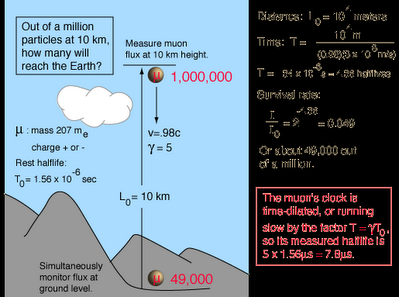
String theory is the theory that the smallest particles (atoms, and quarks) are made up of strings. The theory is that these tiny strings are never still, but instead vibrate. Also they vibrate in many different ways. I.E- if it vibrates one way it makes a neutrons, electrons, and another way a protons and so on and so on. So saying that the world, is not made up of quarks, but tiny strings. The difference between string theory and Quantum Physics. is that string theory embraces gravity and quantum physics does not. So this is my brief on string theory and now to let the pro's explain what really happens. (p.s.- I only post what i understand.)
We live in a wonderfully complex universe, and we are curious about it by nature. Time and again we have wondered--- why are we here? Where did we and the world come from? What is the world made of? It is our privilege to live in a time when enormous progress has been made towards finding some of the answers. String theory is our most recent attempt to answer the last (and part of the second) question.
So, what is the world made of? Ordinary matter is made of atoms, which are in turn made of just three basic components: electrons whirling around a nucleus composed of neutrons and protons. The electron is a truly fundamental particle (it is one of a family of particles known as leptons), but neutrons and protons are made of smaller particles, known as quarks. Quarks are, as far as we know, truly elementary.
Our current knowledge about the subatomic composition of the universe is summarized in what is known as the Standard Model of particle physics. It describes both the fundamental building blocks out of which the world is made, and the forces through which these blocks interact. There are twelve basic building blocks. Six of these are quarks--- they go by the interesting names of up, down, charm, strange, bottom and top. (A proton, for instance, is made of two up quarks and one down quark.) The other six are leptons--- these include the electron and its two heavier siblings, the muon and the tauon, as well as three neutrinos.
There are four fundamental forces in the universe: gravity, electromagnetism, and the weak and strong nuclear forces. Each of these is produced by fundamental particles that act as carriers of the force. The most familiar of these is the photon, a particle of light, which is the mediator of electromagnetic forces. (This means that, for instance, a magnet attracts a nail because both objects exchange photons.) The graviton is the particle associated with gravity. The strong force is carried by eight particles known as gluons. Finally, the weak force is transmitted by three particles, the W+, the W- , and the Z.
The behavior of all of these particles and forces is described with impeccable precision by the Standard Model, with one notable exception: gravity. For technical reasons, the gravitational force, the most familiar in our every day lives, has proven very difficult to describe microscopically. This has been for many years one of the most important problems in theoretical physics-- to formulate a quantum theory of gravity.
In the last few decades, string theory has emerged as the most promising candidate for a microscopic theory of gravity. And it is infinitely more ambitious than that: it attempts to provide a complete, unified, and consistent description of the fundamental structure of our universe. (For this reason it is sometimes, quite arrogantly, called a 'Theory of Everything').
The essential idea behind string theory is this: all of the different 'fundamental ' particles of the Standard Model are really just different manifestations of one basic object: a string. How can that be? Well, we would ordinarily picture an electron, for instance, as a point with no internal structure. A point cannot do anything but move. But, if string theory is correct, then under an extremely powerful 'microscope' we would realize that the electron is not really a point, but a tiny loop of string. A string can do something aside from moving--- it can oscillate in different ways. If it oscillates a certain way, then from a distance, unable to tell it is really a string, we see an electron. But if it oscillates some other way, well, then we call it a photon, or a quark, or a ... you get the idea. So, if string theory is correct, the entire world is made of strings!
Perhaps the most remarkable thing about string theory is that such a simple idea works--- it is possible to derive (an extension of) the Standard Model (which has been verified experimentally with incredible precision) from a theory of strings. But it should also be said that, to date, there is no direct experimental evidence that string theory itself is the correct description of Nature. This is mostly due to the fact that string theory is still under development. We know bits and pieces of it, but we do not yet see the whole picture, and we are therefore unable to make definite predictions. In recent years many exciting developments have taken place, radically improving our understanding of what the theory is.



